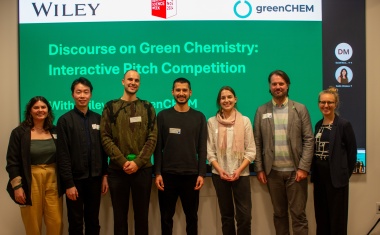Expert Statement: Stephen D Drake, Kaneka Americas Holdings
Executives and industry experts share their views on drivers as well as barriers for the use of flow chemistry in pharmaceutical manufacturing and the prospect for this technology in their industry sector.

Continuous Manufacturing (CM) — also called Flow Chemistry or Micro Reaction Technology (MRT) — is a technique that has been gaining global importance over the past decade as a result of improved process control and reduced operating costs, leading to increased manufacturing profits and a competitive edge. Recent years have shown that the reason for a company to change from “batch” to “flow” have been varied, often depending on the sector, process type of interest and scale of operation. Supply chain security and improvements in process sustainability are strong emerging drivers for the adoption of CM.
With the product key, the infrastructure needed varies greatly and depends on the available chemistry, cost of goods, volumes required and the hazard profile of a transformation. The modularity and flexibility of continuous flow set-ups enables the development of small, agile production plants that can be used for the manufacture of multiple products — with easy re-configuration allowing for rapid product changeover.
Following on from this, the ease of replicating these small footprint systems represents an opportunity for manufacturers to develop a process and subsequently deliver production units across multiple countries to serve the local product demands. This is in stark contrast to the current approach of a single large-scale plant, with warehousing used to manage supply chain disruptions.
With all of these benefits, a logical question follows: Why the slow adoption of MRT?
CHEManager asked executives and industry experts to share their views on drivers as well as barriers for the use of flow chemistry and the prospect for this technology in their industry sector. We proposed to discuss the following aspects:
- In your opinion, what are the strongest drivers (success factors) of the implementation of flow chemistry processes?
- Which barriers are slowing down or impede the implementation of flow chemistry processes?
- What does it need for flow chemistry to be implemented more widely?
Since 2017 Kaneka has been invested in developing commercial manufacturing approaches using flow chemistry and we currently have an FDA inspected GMP intermediate process using flow to produce ~3 Mt/year of an intermediate through phosgenation. Our reactors are designed in house and customizable to many types of chemistry to produce RSMs, intermediates, and APIs at the pilot and commercial scale with a relatively seamless scale-up from the lab. This is an area we continuously invest in with our customers to provide the value of flow chemistry wherever possible.
“The biggest barrier we see to using this technology
is the customer buy-in, unfortunately.”
The biggest barrier we see to using this technology is the customer buy-in, unfortunately. There is a large interest in discovery to evaluate this technology, but it often is decided by our customers to not be implemented at production scale, for various reasons unrelated to our capability.




